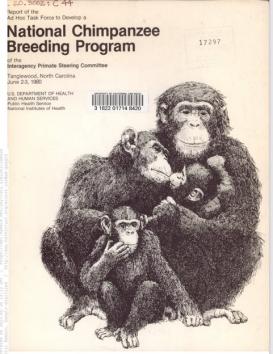Prial’s project traces the history of chimpanzees as laboratory animals in the United States during the twentieth century, considering how parts of the natural world become constructed as critical scientific resources. Her research explores how laboratory science in the United States was shaped not only by chimpanzees themselves, but by the conditions of access to chimpanzees: transnational trade, political change in West and Central Africa, international conservation, and the rise of animal rights activism.
The project traces US laboratory scientists’ utilization of an indigenous African animal from the first US chimpanzee laboratory in 1929 to plans to retire federal research chimps in the 1990s. In doing so, Prial reveals thow histories of colonialism and Global North/South inequities are imbricated in the process of US laboratory research. Focusing on a single species, her project examines the racialized politics of natural resource management in the chimpanzee trade and further explores the experiences and challenges of human-chimpanzee interactions in the lab.
Chimpanzees held scientific promise for researchers in various disciplines, despite the impracticalities of working with captive chimps. Early twentieth-century psychologists, Air Force Space biology researchers in the 1960s, and immunologists investigating cures for bloodborne disease in the late twentieth century all utilized chimpanzees as their preferred laboratory animal. However, keeping chimpanzees alive in captivity and encouraging their reproduction were challenges that often interferred with the animals’ experimental usefulness. As international conservation brought scrutiny to the demands that lab research placed on wild chimpanzee populations, laboratory chimp researchers made claims that chimpanzees were safer and better utilizedin US labs than in their African habitats.
Taking into account diverse disciplinary visions of chimpanzee usefulness, Prial examines how twentieth-century American scientists, animal rights activists, conservationists, and chimpanzee suppliers constructed and contested chimpanzees’ status as scientific resources.

